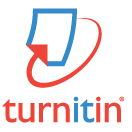Effect of Banana Peel Flour Infusion on Serum LDL Levels of Male Wistar Rat Given Heated Cooking Oil
DOI:
https://doi.org/10.52023/ijns.v1i2.3343Keywords:
LDL level, heated cooking oil, Kepok banana peel flour solutionAbstract
Atherosclerosis is a progressive disease causing a coronary heart disease (CHD). Atherosclerosis is related to the levels of LDL in the blood. An increased LDL in the blood can be prevented by consuming soluble fiber and antioxidants from such Kepok banana peels. The aim of this study is to know the effects of Kepok banana peel flour infusion in various dosage on LDL serum level of male wistar rats which were treated with a repeatedly heated cooking oil. This study used post test control group as experimental design in which 24 male rats were randomly categorized in five groups, namely (1) a negative control group, (2) a positive control group treated with a repeatedly heated cooking oil and distilled water, as well as the groups treated with a repeatedly heated cooking oil and 0.5, 1, and 2 ml/rats of Kepok banana peel flour solution, for group (3), (4), and (5) respectively. LDL level were measured by using calorimetric method . The result of this study showed that the highest average levels of LDL obtained in control positive group K(+) was 14,25 mg/dl and the lowest average level of LDL obtained in the group treated with a repeatedly heated cooking oil and 0.5 ml/rat was 11,2 mg/dl. It can be concluded that Kepok banana peel flour can not significantly reduce the mean of LDL serum level of male Wistar rats treated with repeatedly heated cooking oil (p>0,05)
References
Almatsier, S. (2002). Prinsip Dasar Ilmu Gizi. Gramedia Pustaka Utama.
Atun, S., Arianingrum, R., Handayani, S., Rudyansah, R., & Garson, M. (2010). IDENTIFICATION AND ANTIOXIDANT ACTIVITY TEST OF SOME COMPOUNDS FROM METHANOL EXTRACT PEEL OF BANANA (Musa paradisiaca Linn.). Indonesian Journal of Chemistry, 7(1), 83–87. https://doi.org/10.22146/ijc.21718
Baskaran, G., Salvamani, S., Ahmad, S. A., Shaharuddin, N. A., Pattiram, P. D., & Shukor, M. Y. (2015). HMG-CoA reductase inhibitory activity and phytocomponent investigation of Basella alba leaf extract as a treatment for hypercholesterolemia. Drug Design, Development and Therapy, 9, 509–517. https://doi.org/10.2147/DDDT.S75056
Carvajal-Zarrabal, O., Hayward-Jones, P. M., Orta-Flores, Z., Nolasco-Hipólito, C., Barradas-Dermitz, D. M., Aguilar-Uscanga, M. G., & Pedroza-Hernández, M. F. (2009). Effect of hibiscus sabdariffa L. dried calyx ethanol extract on fat absorption-excretion, and body weight implication in rats. Journal of Biomedicine and Biotechnology, 2009. https://doi.org/10.1155/2009/394592
Fitria. (2013). Karakterisasi Pektin Hasil Ekstraksi dari Limbah Kulit Pisang Kepok (Musa balbisiana ABB). UIN Syarif Hidayatullah, Jakarta.
Gatto, L. M., Lyons, M. A., Brown, A. J., & Samman, S. (2002). Trans fatty acids affect lipoprotein metabolism in rats. Journal of Nutrition, 132(6), 1242–1248. https://doi.org/10.1093/jn/132.6.1242
Gropper, S. S., Smith, J. L., & Groff, J. L. (2008). Advanced Nutrition and Human Metabolism, Fifth Edition (5th ed.). Wadsworth Cengage Learning. https://doi.org/10.1111/j.1753-4887.1997.tb01621.x
Ibegbulem, C. O., Igwe, C. U., Eyong, E. U., Essien, E. U., Wegwu, M. O., & Akachukwu, D. (2013). LDL-cholesterol Lowering Effect of Terminalia littoralis Decoction: Hypothesized Mechanisms. Pharmacologia, 4(1), 34–37. https://doi.org/10.5567/pharmacologia.2013.34.37
Imam, M. Z., Akter, S., Mazumder, M. E. H., & Rana, M. S. (2011). Antioxidant activities of different parts of Musa sapientum L. ssp. sylvestris fruit. Journal of Applied Pharmaceutical Science, 1(10), 68–72.
Irianto. (2007). Panduan Gizi Lengkap Keluarga dan Olahragawan. Andi Offset.
Istiharoh. (2010). Jajanan Unik “Lumpia Bunglon” Berbahan Dasar Tepung Kulit Pisang.
Jaarin, K., Norhayati, M., Norzana, G., Nor Aini, U., & Ima-Nirwana, S. (n.d.). Jaarin 2006.pdf.
Merchant, A. T., Anand, S. S., Kelemen, L. E., Vuksan, V., Jacobs, R., Davis, B., Teo, K., & Yusuf, S. (2007). Carbohydrate intake and HDL in a multiethnic population. American Journal of Clinical Nutrition, 85(1), 225–230. https://doi.org/10.1093/ajcn/85.1.225
Molyneux P. (2004). The use of the stable free radical diphenylpicryl-hydrazyl (DPPH) for estimating anti-oxidant activity. Songklanakarin Journal of Science and Technology, 26(May), 211–219.
Ngarajaiah, Shyamala Bellur and Prakash, J. (2011). Chemical composition and antioxidant potential of peels from three varieties of banana. Asian Journal of Food and Agro-Industry, 4(01), 31–46.
Nuramanah Hayat; Siswaningsih, Wiwi, E. S. (2013). KAJIAN AKTIVITAS ANTIOKSIDAN KULIT PISANG RAJA BULU (MUSA PARADISIACA L. VAR SAPIENTUM) DAN PRODUK OLAHANNYA. Jurnal Sains Dan Teknologi Kimia, Vol 4, No 1 (2013): Jurnal Sains dan Teknologi Kimia. http://journal.fpmipa.upi.edu/index.php/JSTK/article/view/145
Rahal, A., Kumar, A., Singh, V., Yadav, B., Tiwari, R., Chakraborty, S., & Dhama, K. (2014). Oxidative stress, prooxidants, and antioxidants: The interplay. BioMed Research International, 2014. https://doi.org/10.1155/2014/761264
Santoso, A. (2011). SERAT PANGAN (DIETARY FIBER) DAN MANFAATNYA BAGI KESEHATAN. Magistra, 75(11), 35–40. https://doi.org/10.1108/eb050265
Sartika, R. A. D. (2008). Pengaruh Asam Lemak Jenuh, Tidak Jenuh dan Asam Lemak Trans terhadap Kesehatan. Kesmas: National Public Health Journal, 2(4), 154. https://doi.org/10.21109/kesmas.v2i4.258
Sartika, R. A. D. (2010). Pengaruh Suhu Dan Lama Proses Menggoreng (Deep Frying) Terhadap Pembentukan Asam Lemak Trans. Makara Journal of Science, 13(1), 23–28. https://doi.org/10.7454/mss.v13i1.354
Services, U. S. D. of H. and H. (2020). At a Glance At a Glance. At a Glance : Atherosclerosis, 12(3), 1–2. https://www.ippf.org/sites/default/files/2020-07/At a Glance 2019.pdf
TALA. (2009). Manfaat Serat Bagi Kesehatan. Departemen Ilmu Gizi, Fakultas Kedokteran Universitas Sumatera Utara.
TNI, K. (2013). Pengaruh pemanfaatan kulit pisang yang difermentasi terhadap karkas broiler. Jurnal Ilmu Ternak Dan Veteriner, 18(2), 153–157.
Vinarova, L., Vinarov, Z., Atanasov, V., Pantcheva, I., Tcholakova, S., Denkov, N., & Stoyanov, S. (2015). Lowering of cholesterol bioaccessibility and serum concentrations by saponins: In vitro and in vivo studies. Food and Function, 6(2), 501–512. https://doi.org/10.1039/c4fo00785a
Wachirasiri, P., Julakarangka, S., & Wanlapa, S. (2009). The effects of banana peel preparations on the properties of banana peel dietary fibre concentrate. Songklanakarin Journal of Science and Technology, 31(6), 605–611.
Wangeci, N. (2011). Characterisation of Crude Pectin Extracted from Banana Peels by Acid Method (Vol. 38). University of Nairobi.
Wayan, B. N., & Ketut, R. (2015). EFEK BERBAGAI MINYAK PADA METABOLISME KOLESTEROL TERHADAP TIKUS WISTAR. JURNAL KIMIA, 53–60.
Xian, T. K., Omar, N. A., Ying, L. W., Hamzah, A., Raj, S., Jaarin, K., Othman, F., & Hussan, F. (2012). Reheated palm oil consumption and risk of atherosclerosis: Evidence at ultrastructural level. Evidence-Based Complementary and Alternative Medicine, 2012(Ldl). https://doi.org/10.1155/2012/828170
Yahya, F., Zafar, R., & Shafiq, S. (2013). Trend of Fast Food Consumption and its Effect on Pakistani Society. Food Science and Quality Management, 6088, 1–8. http://iiste.org/Journals/index.php/FSQM/article/view/3950
Zubaidah, E., Ichromasari, D. Y., & Mandasari, O. K. (2014). Effect of Salacca vinegar var. Suwaru on lipid profile diabetic rats. Food and Nutrition Sciences, 5(9), 734–748. https://doi.org/10.4236/fns.2014.59084
Downloads
Published
How to Cite
Issue
Section
License
IJNS: Indonesian Journal of Nutritional Sciences is licensed under a Creative Commons Attribution-Share Alike 4.0 International License






